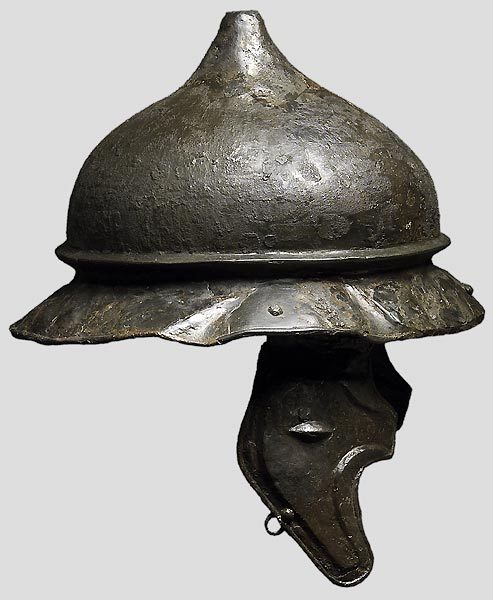 Agen Type
Agen Type
 Roman Military Equipment
Roman Military Equipment
Protective Equipment -
Roman Helmets - Agen / Port
and Weisenau
 Agen Type
Agen Type
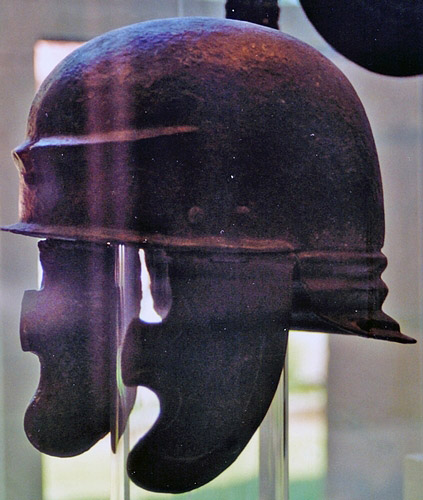 Port Type,
Nidau
Port Type,
Nidau
Weisenau Helmet in Bronze both with a
highly tinned surface,
from the Axel Guttmann Collection

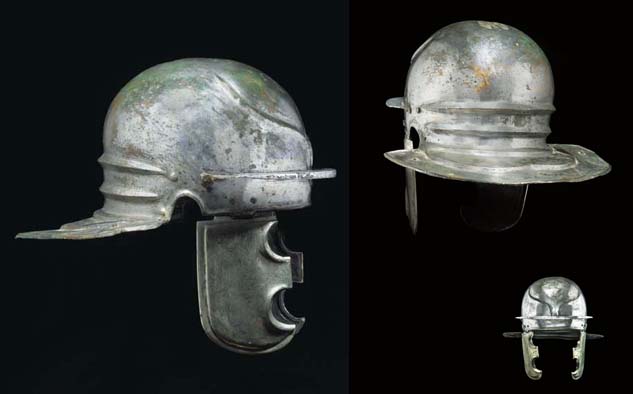
highly tinned brass Weisenau-Guttmann type
with decorated cheek
pieces, formerly in the Axel Guttmann Collection, now in the Madrid
Archeological
National Museum
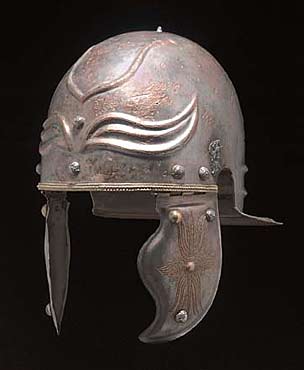
Early Weisenau type helmet, Augsburg Museum
Iron helmet of the sub-type Weisenau/Guttmann (classification by Marcus Junkelmann). For comparison see the tinned example with decorated cheek pieces from the former Axel Guttmann collection (see above picture this section). The iron bowl is completely preserved with both cheek pieces and decorative red enamel studs. Early example of this helmet type attributed to the Augustan/Tiberian period. A-typical "eyebrows" with distinct "celtic" features, previously encountered only in few finds such as a brass helmet in the former Guttmann collection with "hanging eyebrows" (see above picture in this section) and a brass helmet in the collection of the Archaeological Museum Frankfurt.
Private collection, formerly 2006-2007 on display at the
Museum Carnuntinum
(Austria, Bad Deutsch-Altenburg)
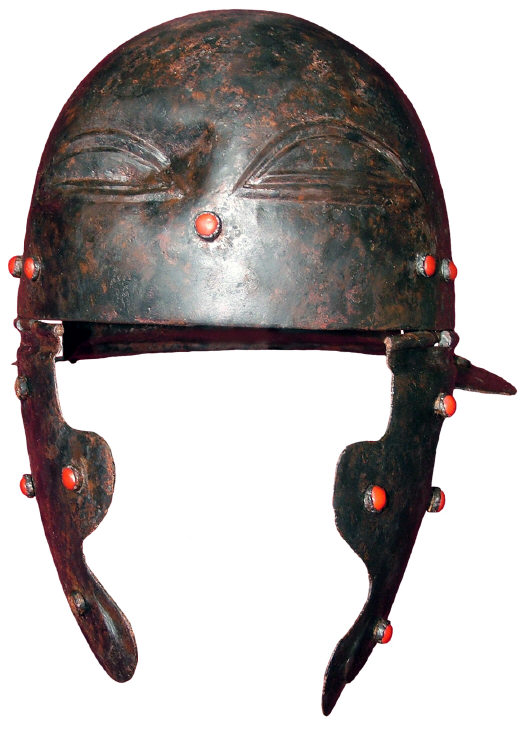

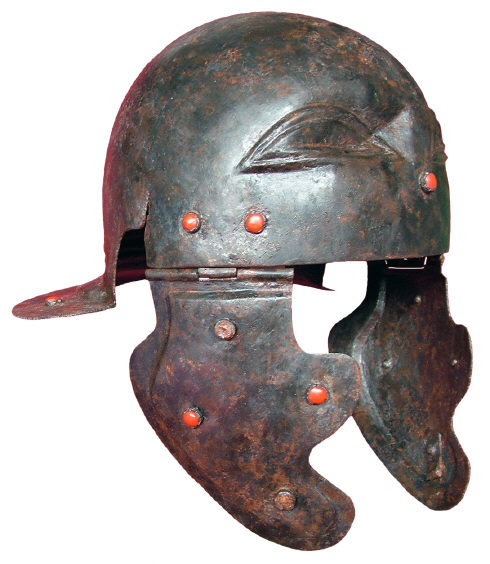
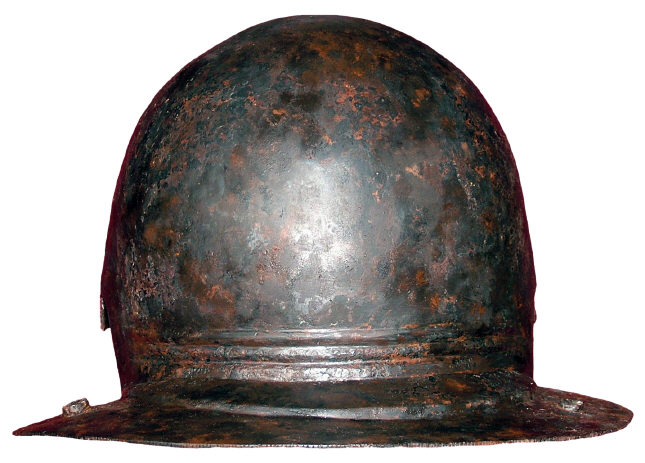
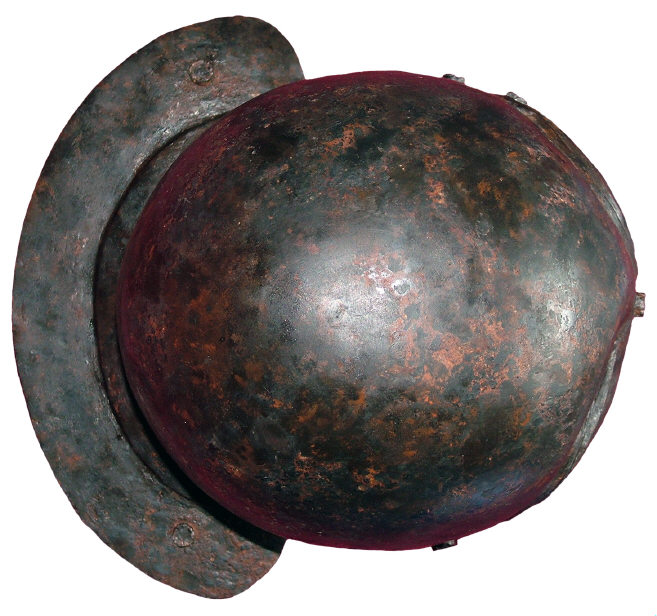
Early Weisenau from the Axel Guttmann
collection, now in a US
private collection. Unusual are the eye brows and shape, showing Celtic
(?) influence.
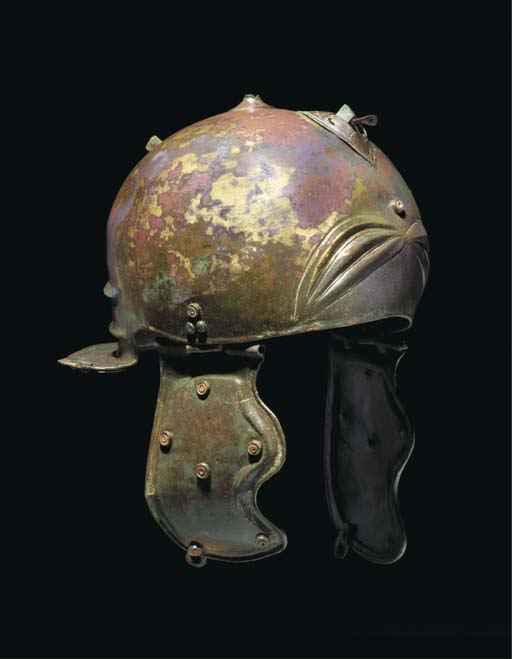
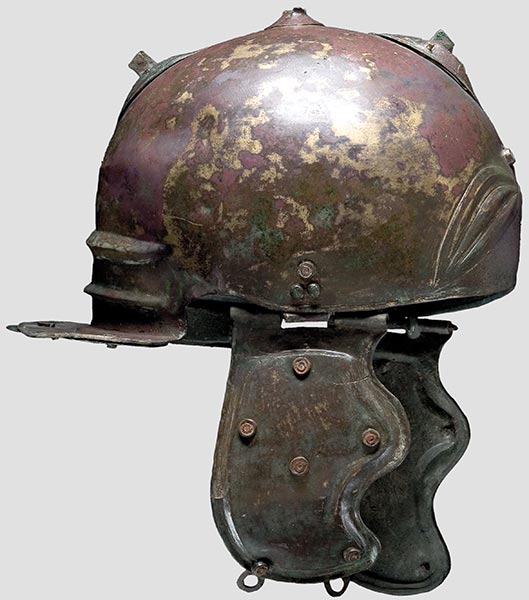
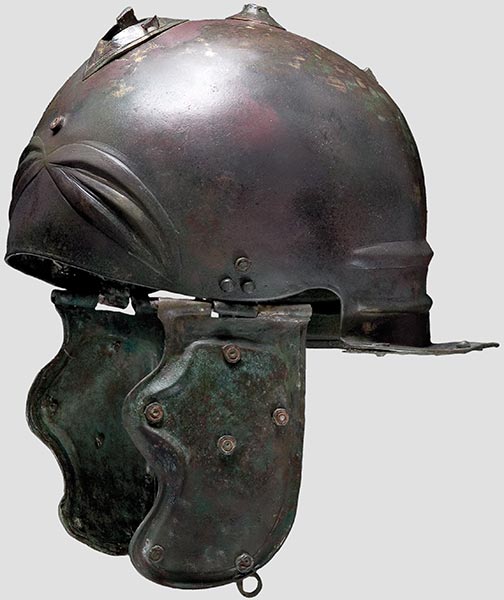
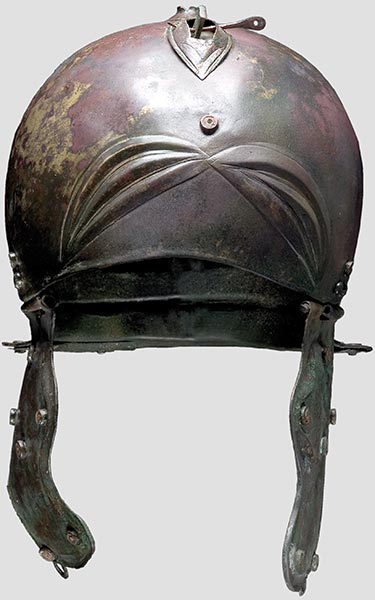
Images with white background Herrmann
Historica Auction
154, 2008, Image with black background Christies Auction 2002-2004
Left brass Weisenau frontal view (copy in
the RGZM Mainz, original
in the Schaffhausen Museum, CH), right iron Weisenau
type helmet
from Nijmegen,
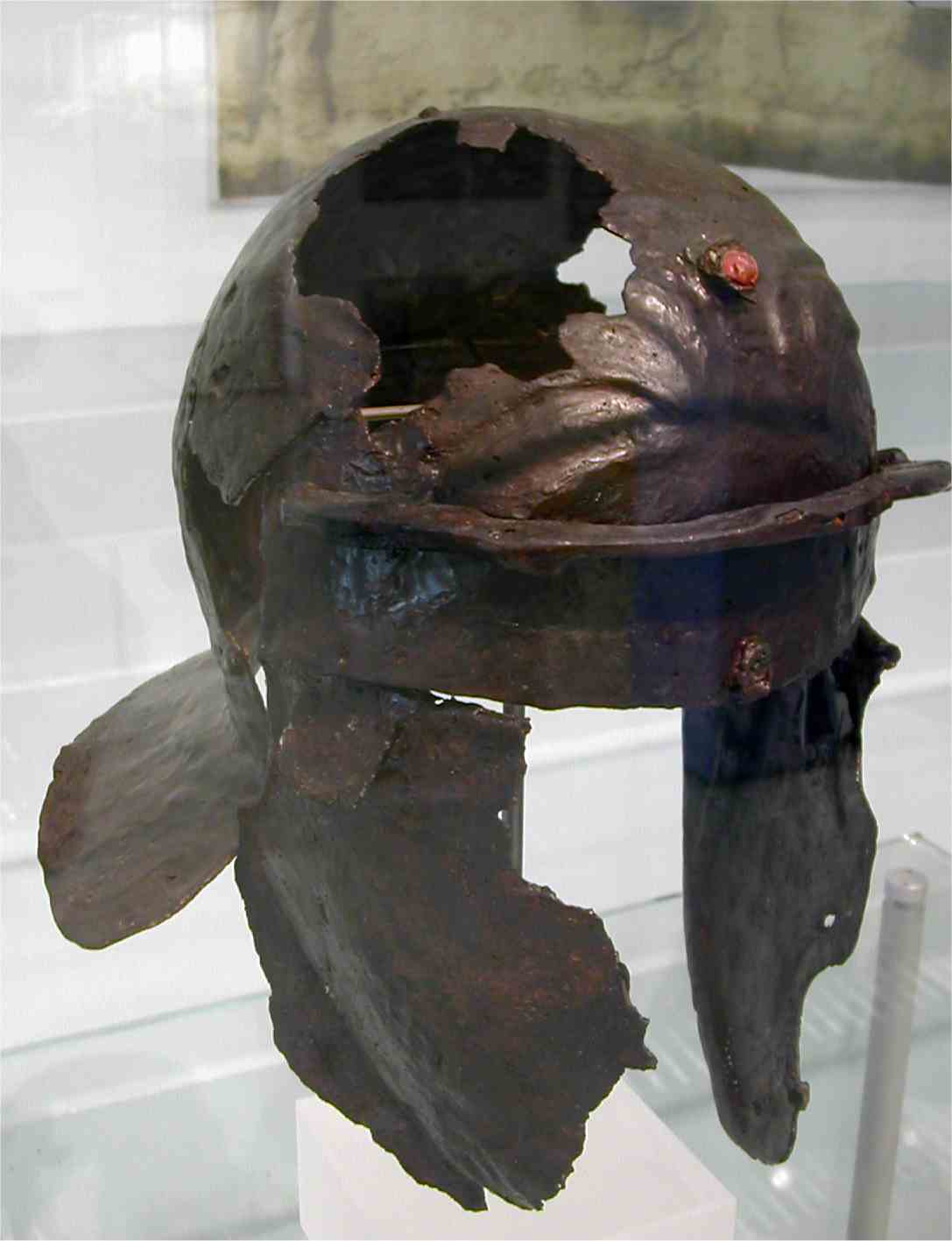
A Weisenau Helmet in Iron with Brass
fittings, formerly Collection
Axel Guttmann, now in the Madrid Archeological National Museum
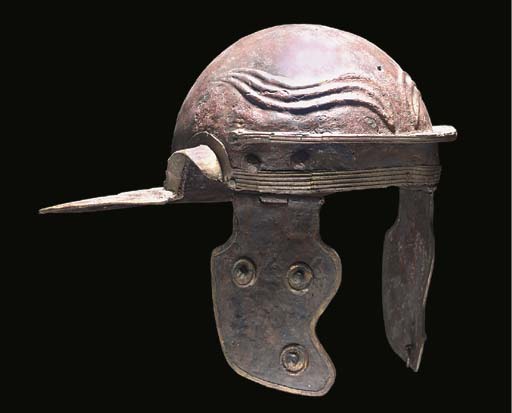
another Weisenau helmet from the
former Axel Guttmann collection,
now presumably in an unknown private collection. Estimated as second
half
first century AD
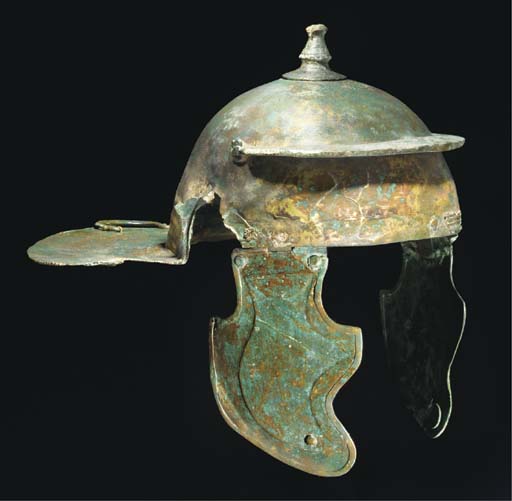 Image
from Christies Auction
Image
from Christies Auction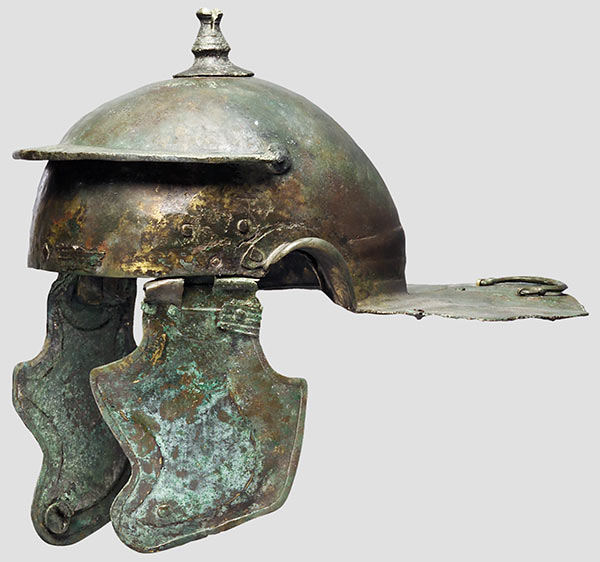
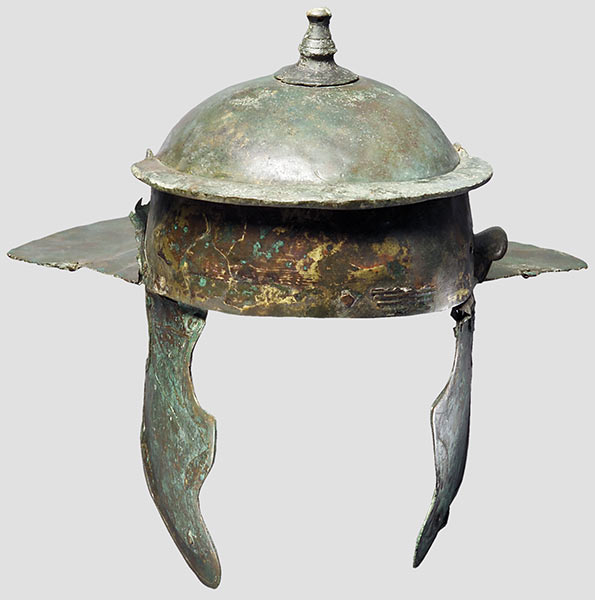
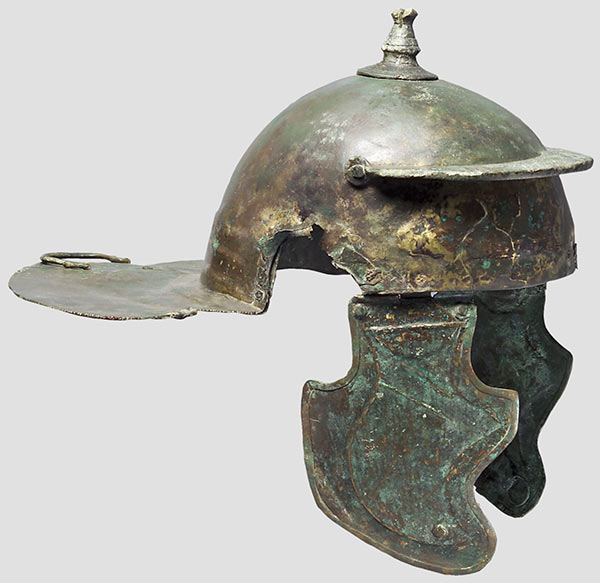 Images
from Herrmann Historika Auction
Images
from Herrmann Historika Auction
Brass Weisenau with multiple owner's
inscriptions on the neck
guard, formerly Axel Guttmann Collection, currently in North American
private
collection
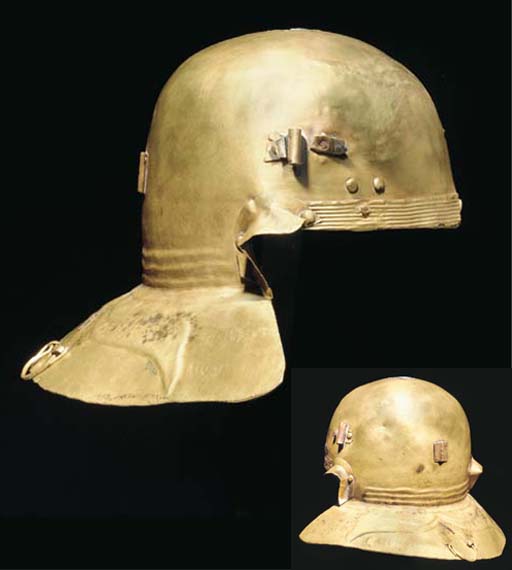
Weisenau type brass helmet from Aquincum
(Budapest Museum)
Weisenau helmet from Bedriacum, (Courtesy
Civico Museo Ala Ponzone
– Cremona-IT - photo www.roma-victrix.com), said to originate
from a civil
war battle field of 69 AD
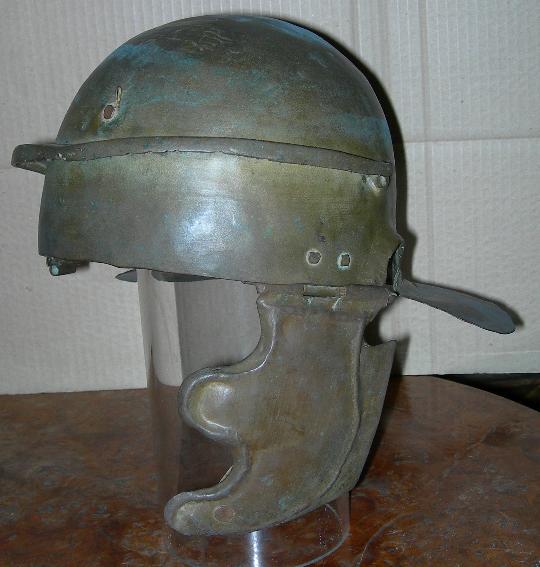
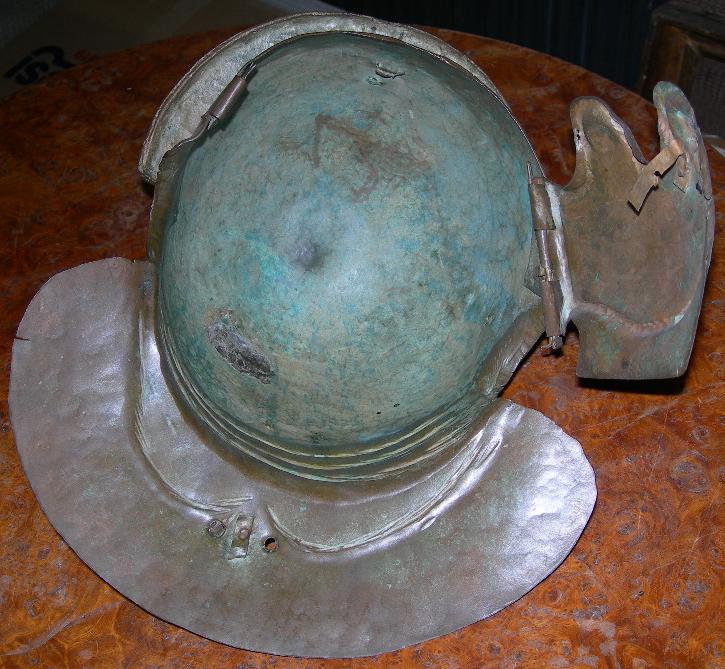
Brass Weisenau from the Köln
Museum, recent 2004 acquisition,
one preserved cheek piece. Said to originate from the Po river near
Cremona,
found in the early 20th century AD, most likely attributable to the
Civil
War 69 AD.
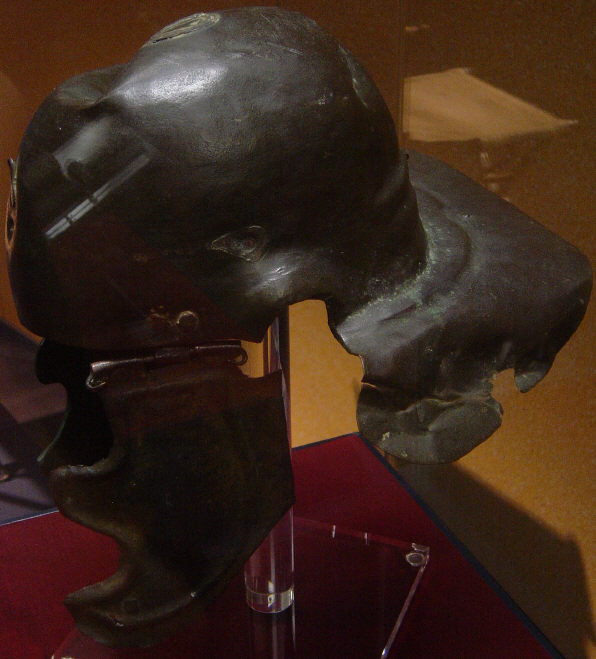
Bronze helmet of the Weisenau Type with a
distinct variation
(a feature not observed elsewhere): two iron cheekpieces with copper
edging
and the remainder of a figural brass decoration on the right
cheekpiece.
The helmet belongs to a relative small group of Weisenau helmets
without
"eyebrows" and articulated horizontal ribs at the back of the skull.
Furthermore
the neckguard is entirely plain and undecorated but it features a
singular
hole at its very center. The frontal protective bar carries a three
letter
inscription (underside).
Dated: Mid - first century AD
Private collection. Formerly 2006-2007 on display at Museum Carnuntinum
( Austria, Bad Deutsch-Altenburg)
Published: Exhibition catalogue "Legionsadler und Druidenstab, F.
Humer,
2006," ISBN 3854602294"
Weisenau type helmet, Vindonissa Museum
image
courtesy of Cesare Rusalen
Weisenau type helmet, undecorated bronze
helmet, ex Gorny&Mosch
auction, now presumably private collection
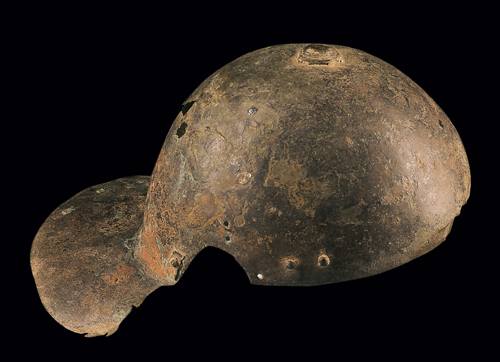
Late Weisenau type, with cross bar
reinforcement, from Theilenhofen
Weisenau type Helmet Cheek piece
The type Niedermörmter
is a late Weisenau
type helmet, here the name-giving helmet now in the Landesmuseum
Bonn.
Another example is the former Axel Guttmann collection helmet
with the
two mice:
Highly decorated brass Cheek piece from a
Weisenau type helmet,
from Munich Archeological Museum
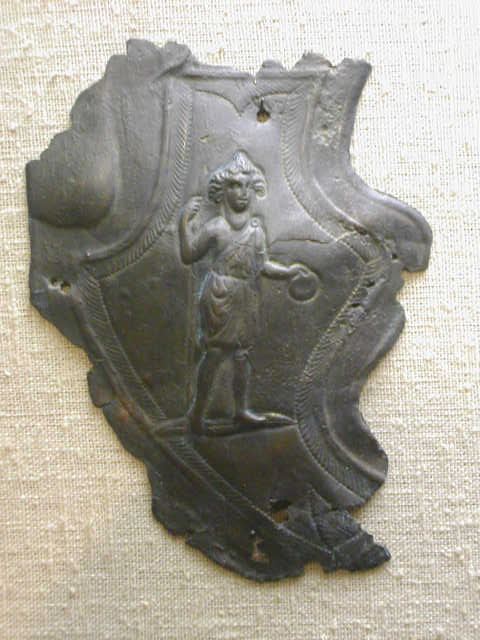
Examples of Helmet handles (fixed to the
neck guard), Aalen Museum
Related Sections of the Roman Numismatic Gallery:
The Location of Roman Legions from Caesar to ca. 300 AD is summarized in a table.
Countermarks of roman legions on coins are shown in the Legionary Countermark section.
Coins making reference to roman legions are to be found in the Legionary Coin section.
Wars and Victories on Roman coins.